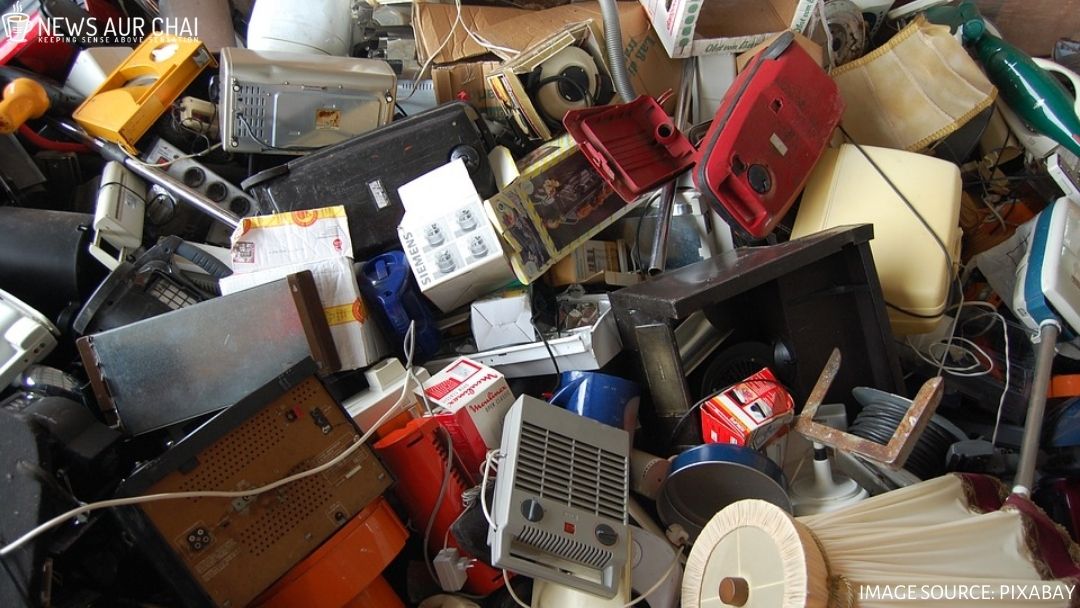
Electronic gadgets have revolutionised the information and communication sector and are now synonymous with our everyday comfort. The existing technology is very transient and is upgrading every minute. The latest phone or TV, or AC you buy today, is deemed antiquated within a month and will be superseded by some other energy-efficient or advanced gadget. The old one will go into the waste, and this waste aggregates into one of the most hazardous e-waste.
Without a doubt, these gadgets pave the way for the reconstruction of our economics, industries, and institutions; but the e-waste generated from it has led to complexity to human health also to the environment. It frames a severe challenge to modern societies and requires collaborative efforts to address it for achieving sustainable development.
E-waste growth in India
According to a Business World report, the number of connected devices in the world will cross the 30 billion mark by 2020. However, what is the additional unpropitious reality is the hazardous consequence of this ever-growing innovation.
India is among the top 5 e-waste generating countries in the world, and it will be a dumping ground for the projected 52.2 million tons of global e-waste stream by 2021. This concludes with an e-waste generation of about 6.8 kg/inhabitant. The use and upgrades of the gadget cannot be halted; the only deal-breaker here is the successful management of the generated e-waste with proper regulation to integrate the informal sector into the formal waste processing setups.
Only around 5 per cent of India’s e-waste paves its way to the proper recycling units and the reasons behind the low percentage is the poor infrastructure, lack of awareness, and the appropriate policy implementation.
Where does E-waste go?
Have you ever given a thought to where the waste you sell to the scrap dealer goes? You will be astounded to know that 95 per cent of the e-waste in India is facilitated by the unorganised sector, yes right, the scrap- dealers, with no proper equipment and medium to manage and process the hazardous e-waste. Here lies the real problem which needs a proactive address from the policymakers and private and public consciousness.
According to the E-Waste Management Rules 2016, “manufacturers of electric and electronic equipment must facilitate their collection and return it to authorised dismantlers or recyclers.”
However, the implementation of the law has slight evidence. The bulk of e-waste finds its destiny to the landfills where the toxic chemicals either gets discharged into the air or percolate within the ground. It harms not just the environment but also the people coming in contact directly or indirectly. The other methods of its disposal like incineration happen to release heavy metals in the air. One of the major e-waste recycling units is in Moradabad, Uttar Pradesh which employs about 0.2 million people in the sector.
Fortuitously, there are emerging groups of innovators who are now cashing India’s e-waste into a profit. The e-waste stream indisputably has raw materials of worth estimated to be more than 60 billion dollars. With the appropriate management and technology, the raw materials in e-waste can be profitably refurbished.
Way Forward: Long road ahead
The technology to convert the e-waste stream into a value stream is allowing entrepreneurs to reconstruct the supply chain completely; however, the reality is on the other side of the tunnel and needs crusading stakeholders.
Currently, the rate of e-waste generation in India is 4.56 times more than its e-waste processing potentials. Therefore, the redressal of the problem is the introduction and enforcement of stricter laws, transparent audits by pollution control boards. We need the collective consciousness of municipalities and Producer Responsibility Organisations while managing e-waste from people and NGOs.
We need public awareness programs and initiatives to reflect on more environmentally friendly ways discarding e-waste. Other synchronised efforts by the public can incorporate roadside e-recycling units — In addition to the wet and dry waste bin, we can also have ‘electronics’ bins on street corners to get responsibly rid of the e-waste.
Many e-commerce companies exchange older phones and give a substantial discount on the new purchase, which is an excellent way to reduce the amount of e-waste that goes into landfills.





